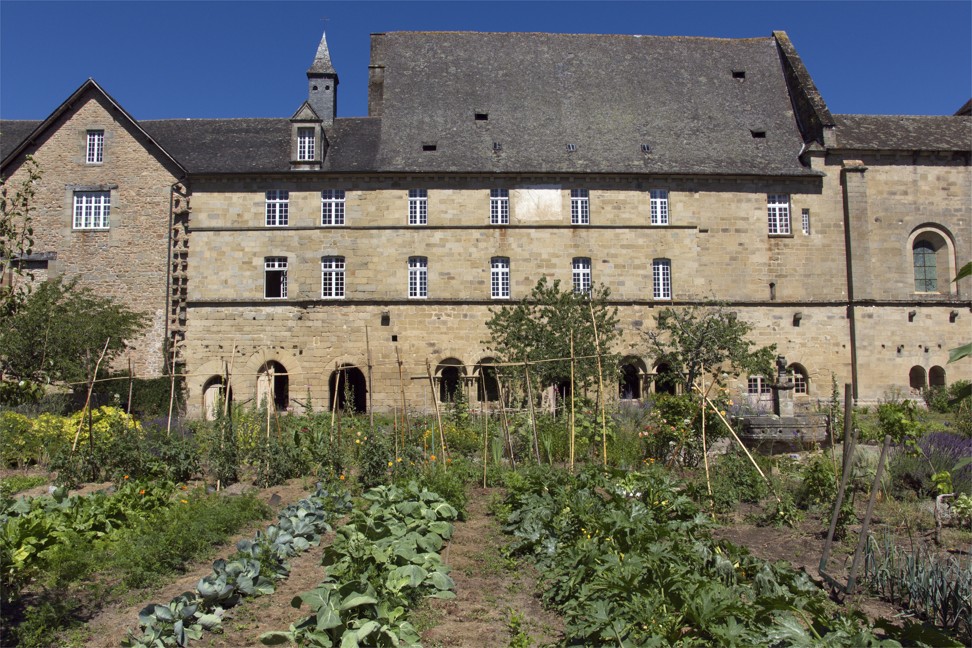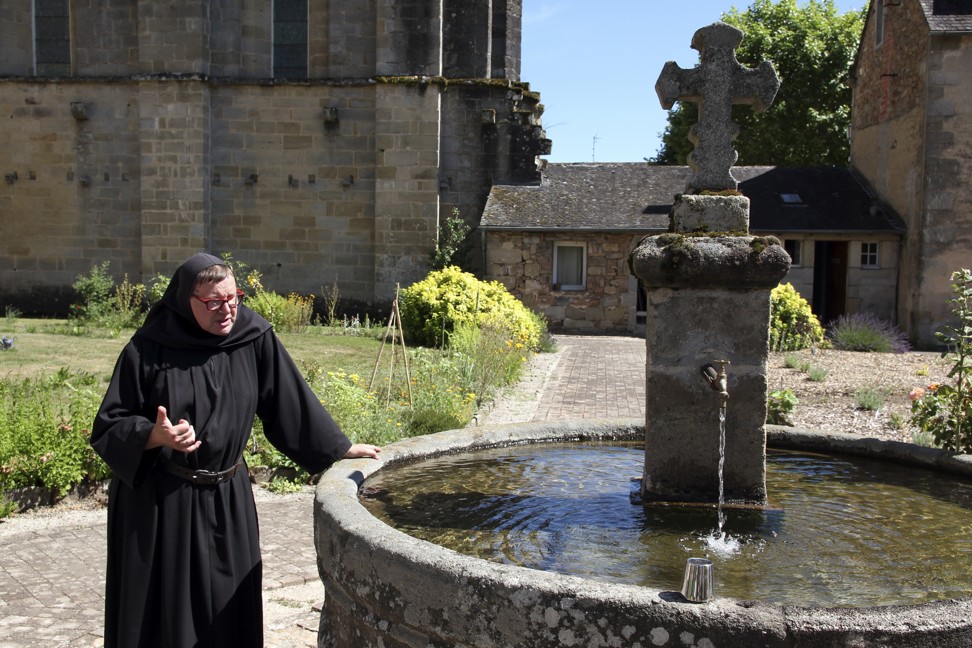
In the footsteps of Coco Chanel, Colette and Simone de Beauvoir in central France
- The countryside of Corrèze in central France helped pioneering feminist Simone de Beauvoir find personal and sexual freedom
- It also gave taboo-breaking novelist Colette a break from hedonistic Paris and provided shelter and inspiration for Chanel’s revolutionary designer

Steep hills, dense forests, rushing streams: the Corrèze department, deep in central France, is known for its nature and adventure pursuits. But the obscure verdure also harbours traces of some of France’s most influential women.
This sparsely populated, far-from-wealthy county was crucial in the political careers of two recent presidents, François Hollande and Jacques Chirac – you can sit in the former’s favourite cafe in the vertiginous town of Tulle, where he was mayor, or visit the latter’s extraordinary museum of presidential gifts, set in a forest clearing at Sarran – but to follow in the footsteps of Corrèze’s women is far more rewarding.
These include 20th century greats whose groundbreaking works had far more lasting clout than anything the politicians did: the pioneering feminist Simone de Beauvoir, the taboo-breaking novelist Colette and – with the most telling traces of all – the revolutionary fashion designer Coco Chanel.
Beauvoir – celebrated existentialist philosopher and author of pioneering feminist work The Second Sex (1949) – spent her childhood summer holidays, up to the age of 21, at her paternal grandparents’ country house, Meyrignac, near the village of Saint Ybard. Enjoying a wonderful fantasy life in its wooded gardens, with their “cedars or wellingtonias, purple beeches, Japanese dwarf trees, weeping willows, magnolias and araucarias […] shrubs, bushes, thickets”, as she remembered in her autobiography, here she had a freedom never given to her at home in Paris by her strict parents, and Beauvoir treasured Meyrignac’s memory her whole life.
Now home to a different family, the house and gardens can be visited only by appointment – but passers-by can peek at them over low fencing. You may just catch sight of the iron table under the flowering catalpa tree at which Beauvoir wrote her first novel, at the age of 15.

The Beauvoir family would shop in the local market town, Uzerche, which was built on a rocky outcrop in a loop of the River Vézère in the 8th century.
A fortified redoubt, Uzerche retains many turreted buildings constructed by the local nobility, giving rise to the saying, “He who owns a house in Uzerche has a castle in the Limousin”. (Limousin was an administrative region that comprised three departments, including Corrèze.)
Alongside the river runs the Simone de Beauvoir Circuit, a scenic walk above which the castle-like town towers. The path has “stops for contemplation”, at which there stand plaques describing Beauvoir’s life and works, and leads up into the old town centre and the Simone de Beauvoir Médiathèque, a public multimedia library in a small single-storey building and an apt memorial for a great bibliophile and author of prize-winning novels.
Halfway through the holiday, the family would stay with other relatives a dozen kilometres away at their stately home, the Château de La Grillère, near the village of Saint-Germain-les-Belles. During Beauvoir’s last summer in that countryside, in 1929, the man who was to be her lifelong partner, the philosopher Jean-Paul Sartre, came to stay at a hotel in the village.
The Boule d’Or is now a private residence. They would meet in the fields near the chateau and there they first made love in a summer idyll, according to Beauvoir biographer Deirdre Bair; “that summer – it struck like a bolt of lightning”, Beauvoir later wrote.

The couple were having “study sessions” for a philosophical treatise they hoped to publish, Beauvoir told her family, unconvincingly. Eventually her father took action, telling Sartre not to “dishonour” the family and to take his holiday somewhere else.
But Sartre didn’t go, her father gave up, and Beauvoir felt triumphant. “My father and mother no longer controlled my life,” she later wrote. “I was truly responsible for myself now. I could do as I pleased, and there was nothing they could say or do to stop me.” In the small-minded countryside of deepest France, Simone de Beauvoir awoke sexually and achieved personal independence all at once.
A hugely popular novelist from the early to the mid-20th century, Colette began writing at the instigation of her rakish husband, Henry Gauthier-Villars, aka Willy, a prolific author who nonetheless employed a stable of ghost writers.
This crucial period of her life received biopic coverage in last year’s Colette , starring Keira Knightley. Colette left Willy and, in 1912, married a newspaper editor with the splendid handle of Henri de Jouvenel des Ursins, often staying at his baronial estate, Castel Novel, near Varetz, in Corrèze.
Of medieval origin and sprouting pepper-pot turrets, the estate’s chateau has been much altered over time, especially in its recent transformation into a luxury hotel, called Château de Castel Novel. Its vast park of fine old oak trees now sports a swimming pool and tennis courts. Inside the noble pile are three dining rooms; one in a Louis XIII room with a monumental fireplace and another in Colette’s old library.
Diners seem to prefer the menu for reading matter, with its rich regional cuisine based on produce from the surrounding countryside. Reopened for a six-month season in April, the chateau offers 37 guest rooms and suites, 10 of which are in an outhouse.

Openly bisexual, having many affairs and sometimes dressing like a man, Colette’s lifestyle shocked bourgeois society and – as her artistic reputation grew – played a part in the creation of the modern Frenchwoman. An early adopter of everything from sushi to weightlifting, and also an actress, her provincial life at Castel Novel was an anomaly.
Often up in Paris with the demimonde, or touring Europe, Colette spent intermittent periods at the château, and the couple divorced in 1924, after Henry discovered his wife was having an affair with his teenage son.
Taboo-busting was in her nature, and the affair was perhaps predestined by her 1920 novel Chéri, about an ageing courtesan’s love for a young man, filmed in 2009 with Michelle Pfeiffer in the lead role.
At the age of 12, Gabrielle Chanel was dumped at the orphanage of the Aubazine convent in Corrèze by her father, her mother having died in the nearby town of Brive. How daunting it must have been for the little girl to be confronted by this massive sandstone institution, with strange black-robed nuns as her guardians. But visiting now, on a sunny summer day in the company of the cheery Sister Christophora, is a distinct pleasure.

The huge former orphanage towers over a large courtyard planted with vegetables and enclosed by much smaller buildings, including a refectory. Attached is a soaring abbey. For six centuries until the French Revolution a Cistercian monastery, revived by the nuns of Saint Coeur de Marie in the 1800s and run by the Melkite Catholic Church since 1965, the convent can be seen on a tour led by the exuberant Irish-American sister.
Things get interesting when we enter the ground-floor chapel, where the orphans celebrated mass every morning. The plain stained-glass windows bear designs with intertwined rings – which seem to prefigure the famous Chanel logo.
Other features of the convent, Sister Christophora explains, marked the young inmate so deeply that they resurfaced in her design career. Up on the first floor is a wide sunlit corridor paved in mosaics of crescent moons and five-point stars. Celestial motifs, especially that star, appear repeatedly in Chanel jewellery designs, says the sister, and five became her lucky number, hence Chanel No 5 perfume.
The black-and-white clothing of both nuns and orphans, along with the beige of the convent walls, gave rise to the basic colours of Chanel fashions, many of her biographers have claimed.
In later years, Coco Chanel didn’t speak of her orphanage days, which lasted until she was 18, inventing stories for this painful period in her life, but nevertheless it deeply marked her aesthetic sensibility. Crucially, young Gabrielle also learned the art of sewing and the value of discipline at Aubazine.
The convent sits alongside the peaceful village square of Aubazine, with its ancient well. A walk around the convent’s high-walled perimeter reveals quaint cottages, one housing a bed-and-breakfast, and a brook that gushes from beneath the convent walls and down through lush pastures – the outlet of the monastery’s water source, channelled by the medieval monks themselves.
Getting there
Trains run from Paris Austerlitz station to Uzerche (4 hours, www.sncf.com/en)